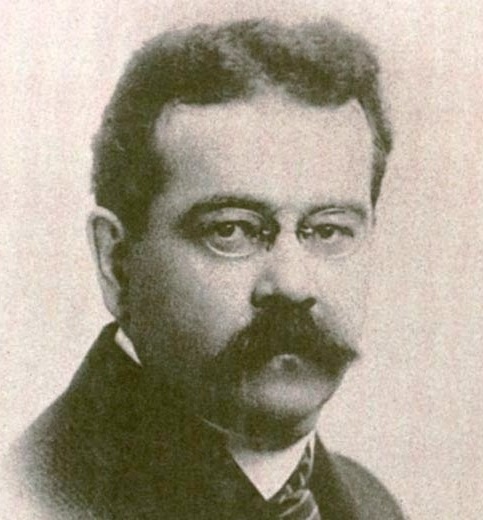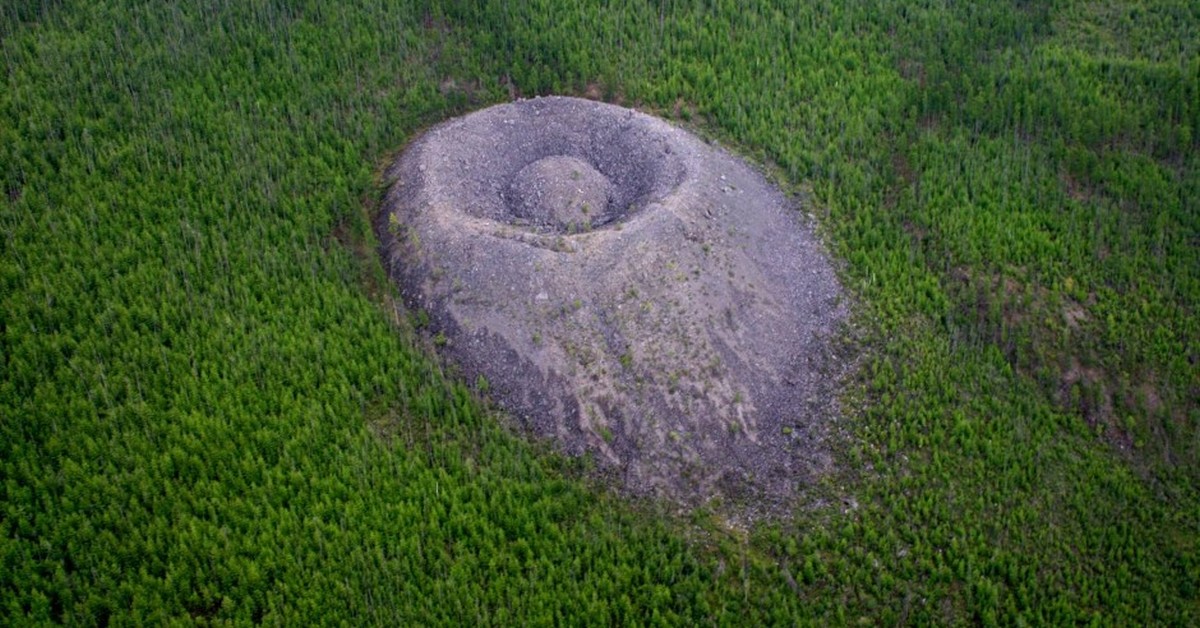It was August of 1949. Geologist Vadim Kolpakov had just heard a tale from locals about an eerie place in the woods known as the “Fire Eagle Nest.” Legends warned of illness, disappearances, and even death for those who ventured close (in 2005, the head of a mission to the crater indeed died suddenly nearby). Unfazed by the words of caution, Kolpakov climbed the hill and was shocked by what he saw from a distance.
…
The origin of the peculiar rock formation that rises from the dense taiga forest on the slopes of the Patom Highlands is still unknown 70 years later, despite several scientific expeditions and studies. It has a base diameter of about 160 meters and a height of about 40 meters. In the center of its ring-shaped cone of shattered limestone blocks, there is a smaller mound with a height of about 12 meters. Some have suggested that it was caused by a meteorite impact, a volcanic eruption or a gas pocket breakthrough. However, none of these hypotheses have been proven conclusively. The crater is estimated to be about 300 years old, based on the age of the trees growing nearby. Talking of trees… Some of them are actually unusually large and fast-growing, compared to the surrounding vegetation. In particular, scientists discovered an unusual anomaly in the annual ring formation of trees aged over 200 years. Some trees fell or broke in 1841-42, displaying concurrent narrowing of annual rings leading to their demise. The complexity deepened when analyzing tree rings near the crater. In the same year, 1842, tree rings exhibited a significant increase, maintaining a surprisingly high rate for approximately 40 years before sharply narrowing. ‘I know of only one similar case,” said Viktor Voronin, a doctor of biological sciences and head of the laboratory of the Siberian Institute of Plant Physiology and Biochemistry, who also visited the Patomskiy crater and came up with the above findings. “When, after the Chernobyl disaster due to release of radiation, the growth of trees increased dramatically. Maybe we are dealing with something similar here? Yes, now the background radiation in the crater is low. But maybe at some point of time suddenly short-lived radioactive isotopes somehow got here, which had to date, break up, and later the radioactivity decreased to natural? “A radioactive meteorite? Or, terrible to say, artificial space objects with nuclear fuel on board? There are trees that fell, and broken trees are there as well. Trees away from the crater generally grow quite inexplicably. And it happened in the same years. In general, it is a mysterious story.”



From the wiki article:
From the further down the wiki:
And
It’s funny how often “mysterious” phenomena that leave scientists “baffled” can be explained reasonably.
I mean, if I understand this correctly, they still don’t know wtf happened. They just know it was not a meteor impact.